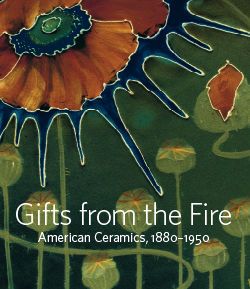Polo Player plate
Waylande Gregory American
One of Gregory’s most successful ideas for dinnerware was a striking set of plates which feature polo players, each with a variant of the design. The sport of polo enjoyed a heyday in America during the 1920s and 1930s, especially among the moneyed leisure classes. This upper-echelon sport was brought over from England, and private clubs in America dominated the game. But its popularity as a spectator sport was farther reaching. Literally thousands would throng to the matches such as those at the famed Meadow Brook Polo Club in Old Westbury, Long Island, made famous by the writings of Damon Runyon and others, and it became a popular and distinctive subject for artistic expression in diverse media. Gregory was among those who witnessed the energetic games there, and it provided the impetus for this set of highly decorative plates. The figures are fully Cubist in spirit, abstracted and with clever contrasts of solids and voids. Their undulant profile of their novel shape parallels other innovative designs at the time, from the curving walls of Alvar Aalto’s glass vases of about the same date to Wilhelm Käge’s Soft Forms dinnerware.
Curiously, Gregory did not extend the Polo Players into a full dinner service. There were no plates of other sizes, no platters, no cups and saucers, pitchers, or tea pots. On the other hand, Gregory did produce many other domestic items with related polo player designs—ash trays, coasters, even lamp bases—all executed in the same sgraffito technique and in the same palette of soft brown or gray. The setting also included small polo player figurines in poses similar to those on the plates.
This image cannot be enlarged, viewed at full screen, or downloaded.

